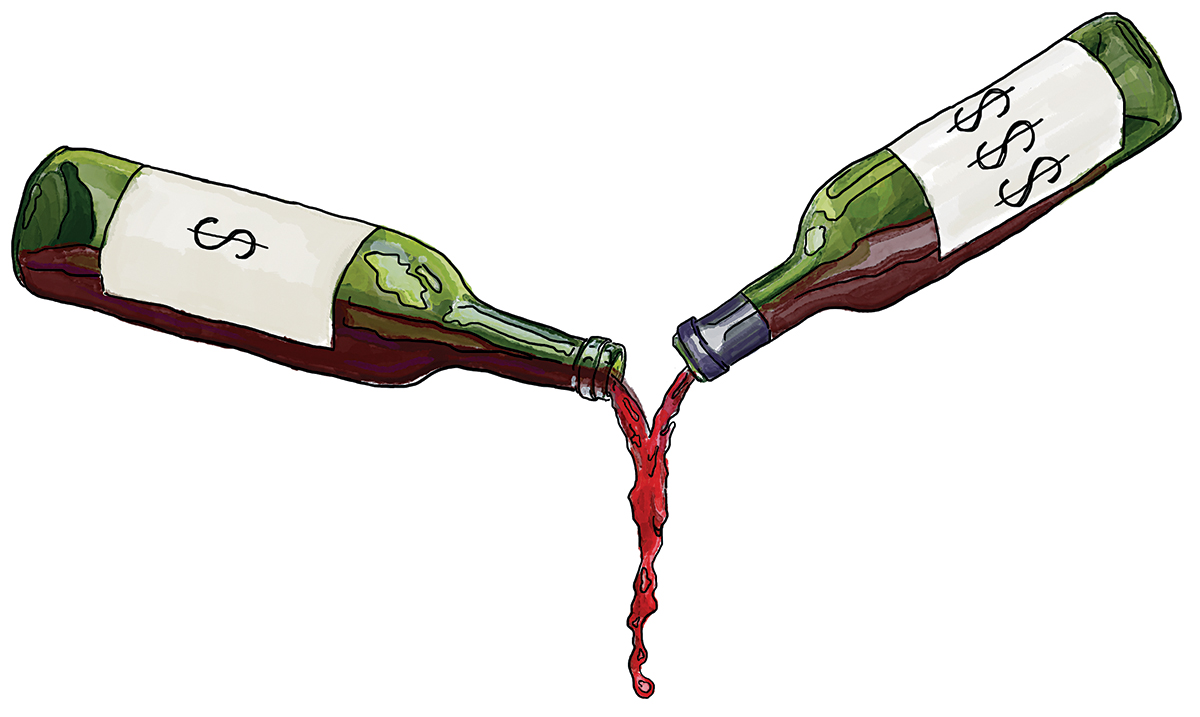Fine Wine, with a Cheap Finish?

Illustration by The Ellaphant in the Room
Until recently, I hadn’t given much thought to tipping on wine. When the bill comes, I simply add 20 percent to the whole shebang. But the more I’ve braved the vertigo of ordering splurgier bottles, and the more I’ve “quarantined” my chichi Chambolle-Musignys on a separate check to keep fellow diners off the hook for my lavishness, the more I’ve questioned the wisdom of this flat-rate approach. You see, isolating the vino has a funny way of underscoring its troublingly volatile pricing structure. My server earns about the same whether I choose the $35 filet or the $25 squab. But is it fair to give her $40 to open my $200 barolo and only 10 bucks for the same work on a $50 falanghina? Equally vexing: Is it fair to me? After polling industry insiders, I got every answer under the sun, from “10 percent is fine for bottles over $100,” which seemed reasonable if arbitrary, to “anyone who can afford thousands of dollars for wine can afford to tip on it,” which just seemed angry. I also heard sordid tales of ruthless tip-sharing systems, of hard-to-master decanting rituals. While the responses were mostly unsatisfying, mulling them over helped me realize why I’m sticking with my clumsy old flat rate. At the end of the day, dining out is a privilege, especially when a spendy quaff is involved. It’s a celebration of bounty, of convivial fellowship—a spirit wholly antithetical to nickel-and-diming my server in pursuit of “fairness.”


